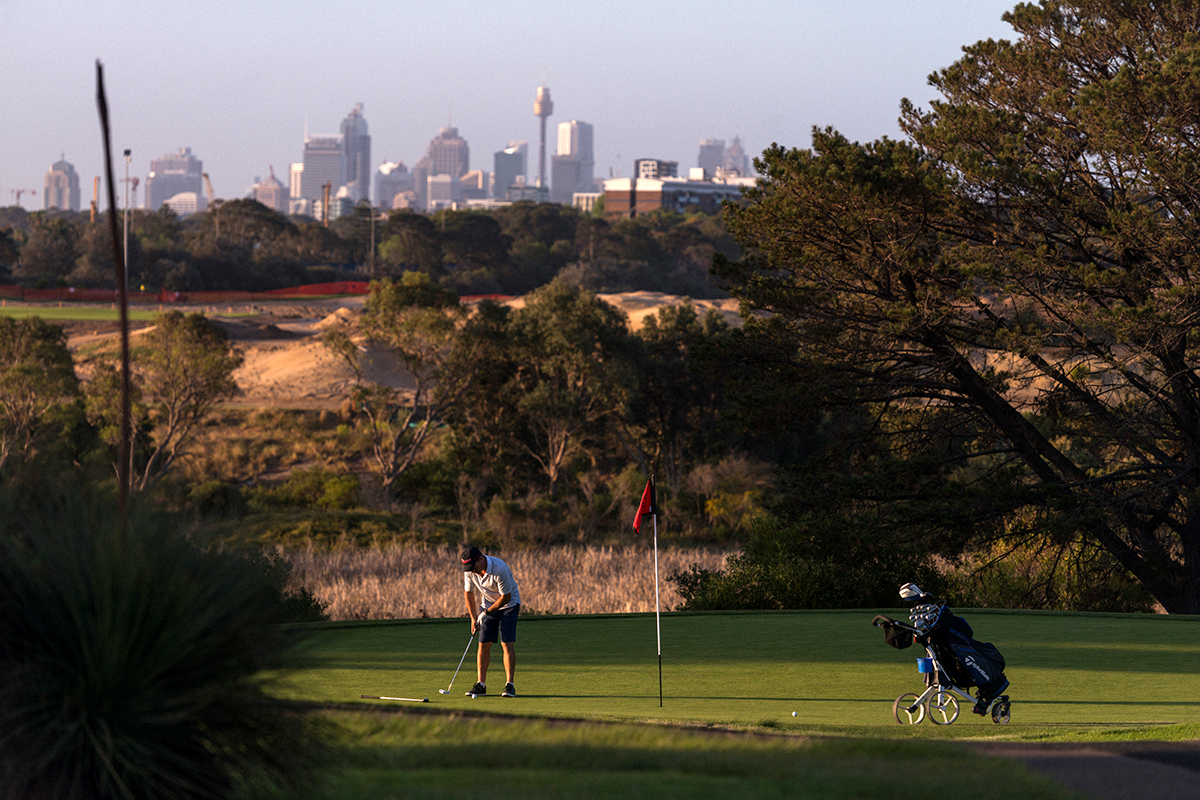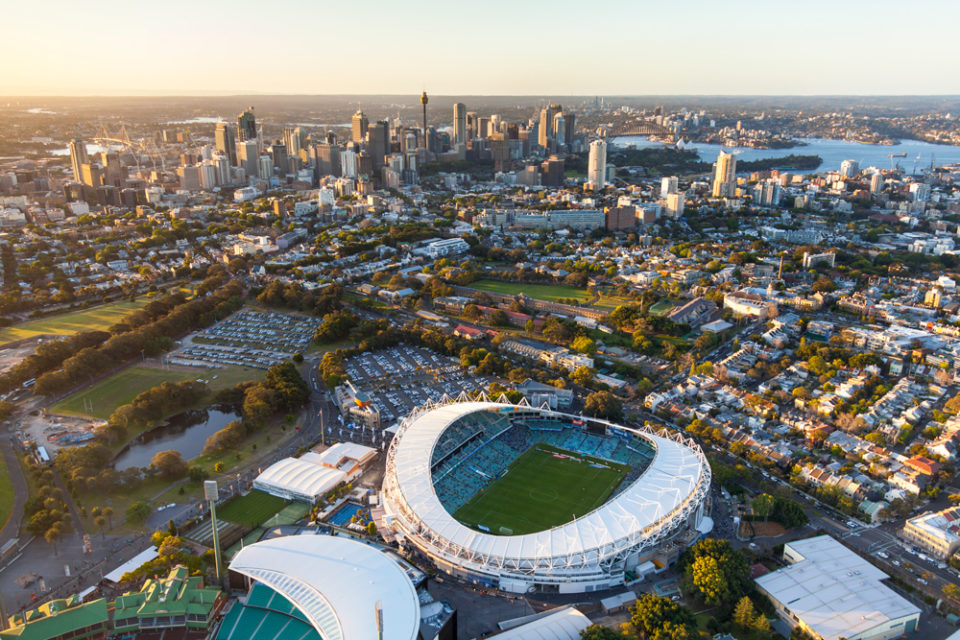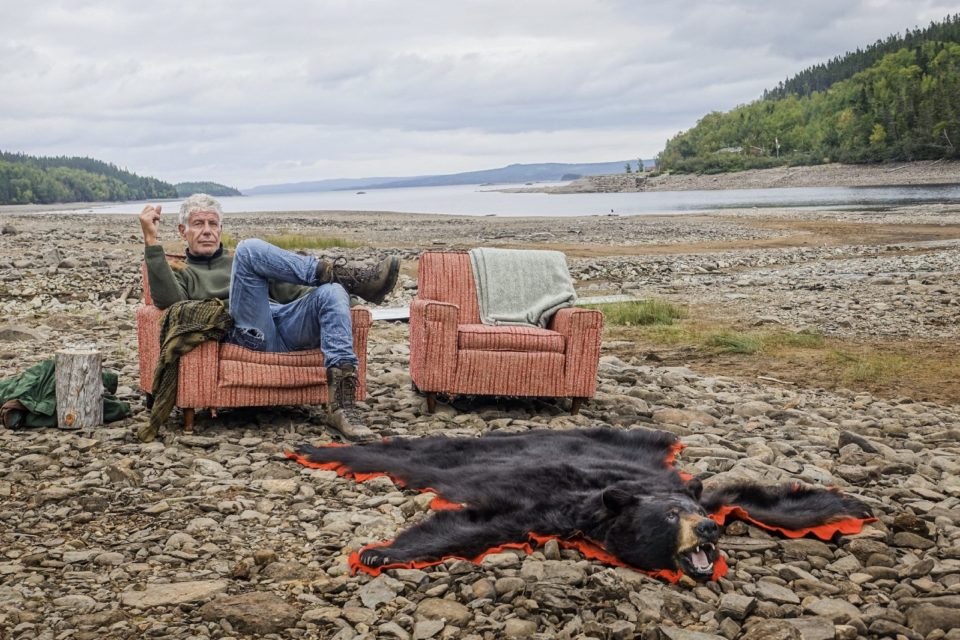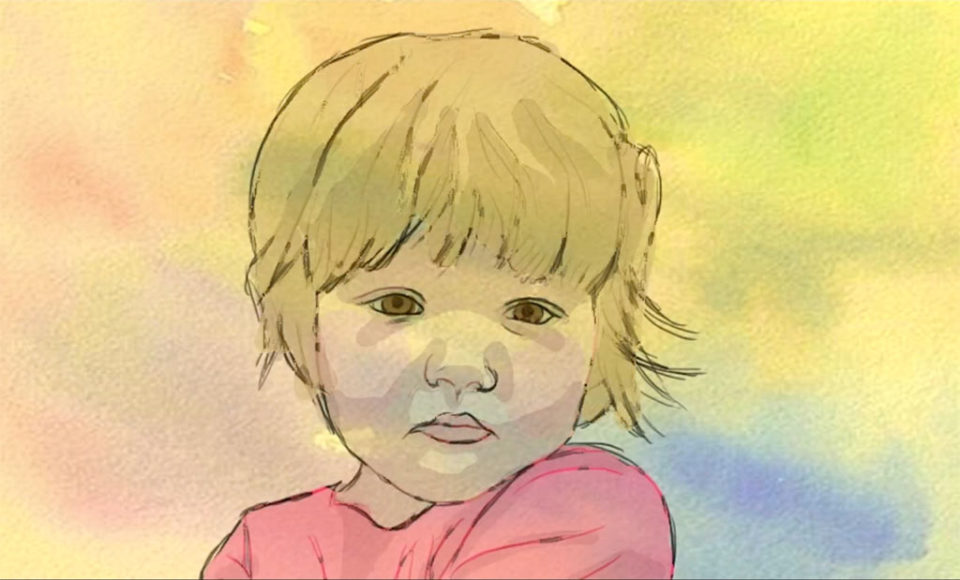For the non-golfing population of Sydney, golf tends to be that green blur out the car window travelling down the M1 or the algal blooms that spread across the city from an aerial vantage.
The 91 courses in the Sydney metropolitan region take up almost as much space as Botany Bay (some 38 square kilometres). For a city in the midst of a population boom, with apartment living emerging as a way of life, this allocation of open green space is not just a question of sporting preference but public good.
Sports-mad as ever, Australians have found the allure of membership to golf clubs particularly easy to resist. Member numbers have trended down since 1998, the year after Greg Norman’s final win on the PGA Tour. Since the Shark’s departure from the winner’s circle, membership has slumped from half a million to around 400,000 committed souls, mostly men, nationally.
Male is safely the universal golfer’s sex. Male and 54-years-old to be precise – emerging from the halcyon age of manly togetherness, prior to our current era of shared parenting and the ever-enthralling working week. Ladies’ day was traditionally Tuesday or Friday. Men played Saturday competitively and Sunday socially. Nowadays, women are finding other things to do with their time and the proportion of females sporting plaid upon the green has gone from roughly a third, at its height in 1970, to one-fifth today.
The decline of civic life, its diabolical rebirth online, and our changing recreational tendencies have made us more likely to squeeze in a run before work or, for some, golf alone.
With player participation rates moribund and land values rising, golf courses – particularly public ones – are caught in the middle of a three-way contest between a population largely unconcerned with golf, developers with eyes for well-located land and the six per cent of us that still play the sport.
Beyond its comedic forays, à la Chevy Chase and Bill Murray in the loutish Harold Ramis caper Caddyshack (1980), the game is generally panned for its association with apoplectic retirees, corporate parvenus and the super-posh. To many sane minds, golf is a stupid thing to spend time and money on.
Jeff Blunden of Golf Business Advisory Services (GBAS) has been advising the industry through uncertain times. He says golf clubs are playing catch-up with a population whose recreational psychology has changed from club-life to recreation on-demand.
“We used to use golf as an escape from the world, now we never want to be disconnected,” Blunden says. “Golf,” he notes, “doesn’t fit well in this changing social environment in which we live”.
The story is quite different for Sydney’s wealthy private golf clubs whose waiting lists overflow with affluent dilettantes. Predictably, it’s the public courses that have been first to feel the pinch of dwindling membership numbers, rising operating costs and meddling councils.
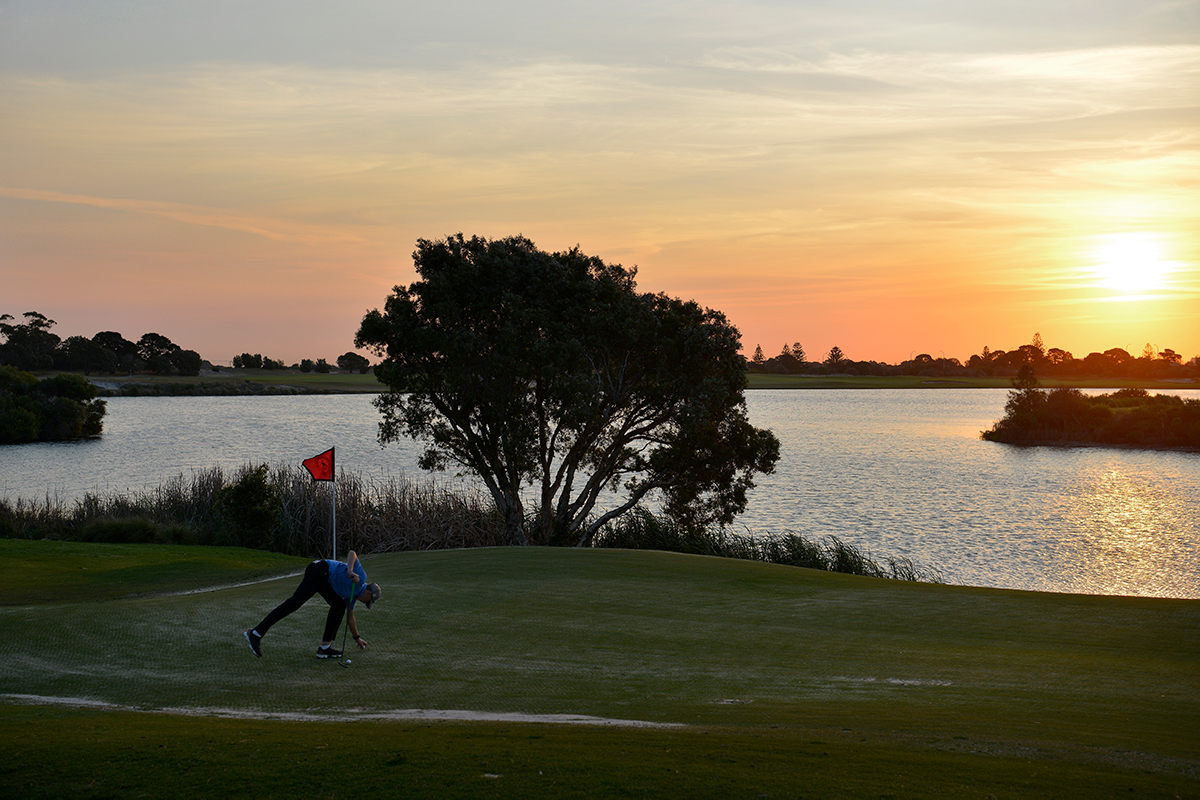
Photography by Matthew Abbott
Moore Park: the fairway
Bucking the trend is Australia’s first public golf course, Moore Park. Its championship length dominates the less salubrious but historic parklands alongside a newly refurbished driving range. The city’s active masses left with the remainder of the parklands can only look on in bemusement, or disdain. Chronic underfunding and its use as a car park for sporting events threaten the condition of Moore Park just as its popularity as a destination has increased.
The Centennial Parklands, which includes Moore Park and Queens Park, has over 20 million individual visits each year and sees a yearly increase in demand for its fields and facilities of 14 per cent.
As the saying goes, golf is the best way to ruin a walk, or, for that matter, a run, a footy game or any other semi-serious kick-around that requires open green space. It’s an issue not lost on Sydney Lord Mayor Clover Moore, who tried in 2015 to negotiate the course being trimmed down to a brisk nine holes, something that would remove its championship-length and have many golfers looking elsewhere. Cr Moore argued, “Across the world, golf courses are slimming down to a modern nine-hole format.”
One of the busiest courses in Australia, Moore Park Golf is a vital source of revenue for the Trust and brings in roughly 25 per cent of its total earnings. It ought to, as the cost of operating the course is substantial compared to other forms of recreation. According to the Centennial Park and Moore Park Trust’s annual report for the 2016-17 financial year, it spent $3.7 million on operational costs for the golf course, well over half the amount the Trust spends on maintenance for the entire Centennial Parklands.
“The reality with golf is that it costs money to operate. It costs money to maintain that green space,” says Blunden, who has seen many clubs mismanage their assets in the short term and lack funds for one-in-twenty-year bills like replacing an irrigation system or clubhouse.
The success of Moore Park as a site of public golf is written into the club’s genesis, which it owes to two lumpen Scottish migrants, Duncan and Charlie McMillan. The nine-hole Moore Park Municipal Golf Links – a barren, sandy links quite unlike the parklands vista of today – was opened in 1913 after the intense lobbying of Sydney City Council by the Scots. Egalitarian from its conception, the course doubled in size in 1922 after the land south of Dacey Avenue was acquired by the City.
As the 21st century rolls towards its third decade, the thousands of apartments amassing in Green Square, Rosebery and Zetland mean the City and many of its constituents could benefit from the course being returned to its original nine-holes.
Showing form, the golfers have won the first round. In May 2017 the Centennial Park and Moore Park Trust released the final Moore Park 2040 master plan and, golfers taking priority, the 18 holes will remain.
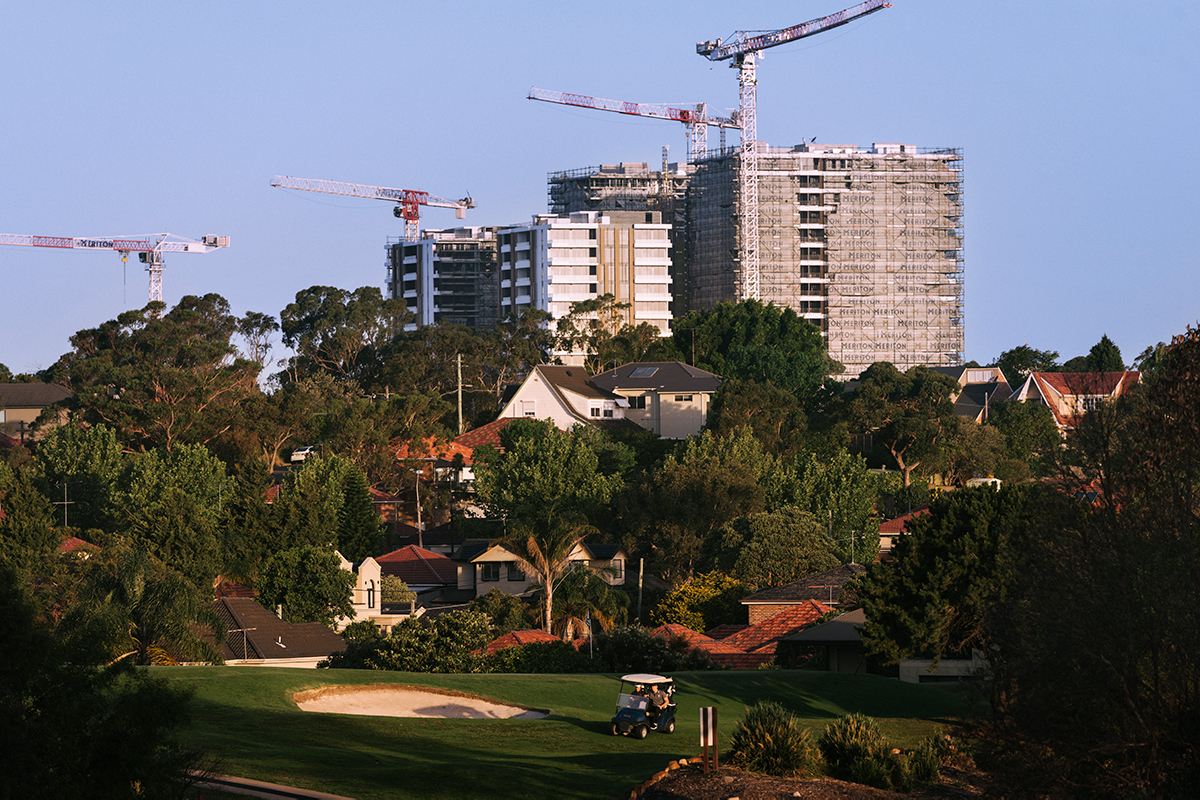
Photography by Matthew Abbott
Eastlakes: the rhinestone in the rough
Ten minutes’ drive south of Moore Park is another potential public golf flashpoint at Eastlakes Golf Club, situated on the heritage listed Botany wetlands alongside the members-only citadels of Bonnie Doon, The Lakes and The Australian Golf Club. The fading peach coloured clubhouse of Eastlakes, with its misspelled signage, is a long way from the its privileged private neighbours, whose fortified grounds and buildings take their design cues from foreign embassies.
At Eastlakes, Fords and Hyundais line the suburban streets of Daceyville, the nation’s first public housing scheme. At Bonnie Doon and The Australian, it’s Mercs and Maseratis in private parking lots. The entrance to The Lakes is marked by a bronze sculpture of a male golfer, muscles bulging mid-swing, for those who imagine golf as a sort of gentlemanly wood chop meet.
In 2015, the former Botany Bay Council proposed opening up the wetlands at Eastlakes to the general public as parklands in its Botany Bay 2040 Directions Paper. “The Botany wetlands are beautiful,” said then mayor Ben Keneally. “For the last 50 years they have been protected by being locked up inside golf courses and industrial estates. It’s now time to unlock this hidden gem.”
The amalgamation of Botany and Rockdale councils in 2016 means Sydney’s golfers may have dodged that bullet too. If the club can secure a renewed lease from the government landholder, Sydney Water, when the current lease expires in 2025 there will be plenty of rounds left in her yet.
Holding on to a future for public golf at Eastlakes is Alan Seon of the Yarra Bay Golf Club. Yarra Bay is a “social” golf club without a course or a clubhouse, which has played here at Eastlakes since 1952.
“It’s a golf course,” says Seon, aghast at the former council’s proposal. “If you take away the ability of pensioners and young people growing up – who are striving to be Greg Normans – what kind of a society do you end up having?”
Eastlakes is a fine course with several challenging longer holes and some ferocious marshland that consumes thousands of hooked and faded missiles, yearly. The par four sixth forces some daring from a high elevation, angling west towards a narrow fairway almost out of sight, invariably sending you scouring through some eastern banksia scrub with a low iron.
Such confrontations with destiny are the spiritual currency of the game, whether wandering through the rough in a Fibonacci pattern looking for a stray white kernel or raking over a befouled bunker – those zen gardens of human failing.
To lose Eastlakes would be a shame for those, like Alan, enlisted in the service of the game. “Leave the golf courses alone,” he demands, “If they take this away then they should think of making The Australian [Golf Club] available to the general public. Try getting that one through.”
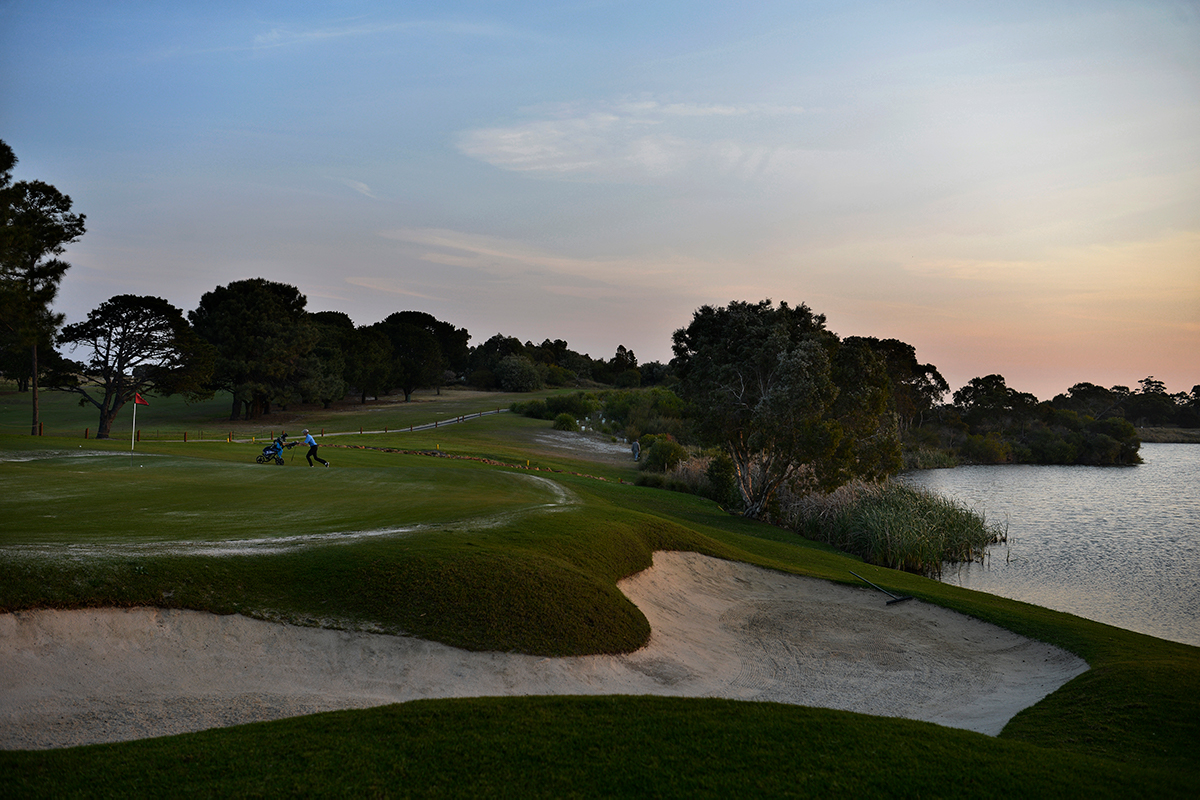
Photography by Matthew Abbott
Royal Sydney: the citadel
At the other end of the spectrum are the established private clubs with waiting lists, subscription fees in the five-figure territory, strict dress codes and a clearly off-limits quality to their boundary fences. Topping the list is Royal Sydney, with over 2,500 members and an annual revenue of over $33 million.
Unlike other courses on the Sydney ‘sandbelt’, a strip of golfing geography stretching north from Botany Bay, though the wetlands and Centennial Park to Rose Bay, Royal Sydney owns the land it operates on. The club acquired the land in 1916 for £20,000 off the Rose Bay Land Co Ltd, a RSGC member-owned company formed solely to secure the club’s tenure. As a sporting club, it is also exempt from paying land tax on its 58 hectares of prime Sydney real estate.
Royal Sydney has hosted the Australian Open 15 times, most recently in 2016, and boasts tennis courts, a sprawling clubhouse and a fitness centre with a 25-metre swimming pool. Members entering in fitness attire must use the service road entrance rather than the main gate and can be reprimanded for wearing thongs. Those who wish to may enjoy such soporific calendar events as the annual ‘Fathers and Sons’ Dinner’ or ‘Mothers and Daughters’ Lunch’ and digestible guest speakers like the ABC’s Annabel Crabb.
Speaking anonymously, one of its younger members admits, “Royal Sydney is a relatively conservative place,” although he’s never been to a Fathers and Sons’ Dinner or one of the club’s well-attended bridge tournaments.
Its conservatism spilled over into anti-semitism in 1908 with a rule imposed not to admit any further members of the Jewish faith (long since abolished). Amidst the Fairfaxes, Turnbulls, Macarthurs and Rankins of the club’s pre-war member lists are two Jewish brothers S. Levy and H. Levy and their spouses, to whom common opinion gave a rare amnesty.
Despite all the swank and gaiety, Royal Sydney has always been a fantastic course to play and is one of the top three courses in the country. “In the past,” says the member, more avid golfer than social climber, “a lot of people joined golf clubs to socialise with the ‘right’ people. Now, as fewer people play golf regularly – especially during their careers – the social aspect of [Royal Sydney] is less intertwined with career advancement than it was 30 or 40 years ago.”
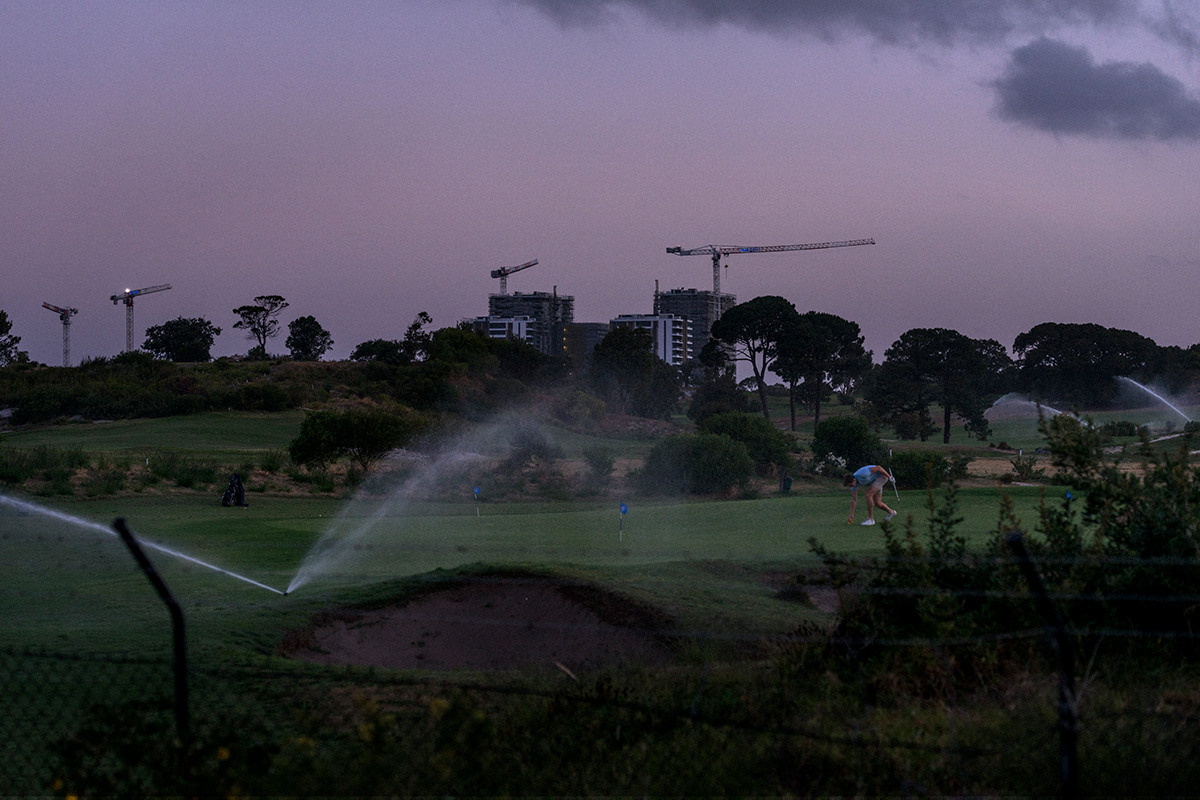
Photography by Matthew Abbott
For public golf, a longer drive
Despite the drift in emphasis from social cohesion to personal recreation – both the highfalutin and commonplace – clubs like Royal Sydney will remain in perpetuity a luxurious stretch of green for the well-off to swing steel.
Their tenure and financial backbone less secure, it is the public courses that are on the chopping block. Alan Seon of the landless and itinerant Yarra Bay Golf Club is plain about the gravity of losing his club’s home turf at Eastlakes. “I think our communities are being chewed up in a nasty way,” he laments, sucking the froth from a well-priced schooner.
“A lot of elderly people cannot afford to pay $10,000 a year or $200 for a round of golf. You have to leave things for the people,” he says, by which he means golfers.
In the midst of a transformative period in the city’s history, Sydney’s golf courses are places of conspicuous quiet. In their stillness rests the beige sense of social harmony and tradition the game has always encouraged and for which it has long been ridiculed.
Greater consumer choice and time-sensitive fitness regimens have undermined the feasibility of the public golf course as a sporting and cultural site. This loss has occurred as Sydney’s private golf clubs continue to prosper, their social purpose remarkably well intact.
As the land squeeze builds momentum across the city and higher densities put pressure on publicly reserved space, the Scots’ ancient game could one day be locked away behind automatic gates or banished deep into the suburbs. For now, the golfing public have 38 square kilometers of landscaped earth to contemplate their next drive.


